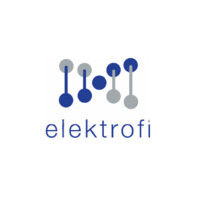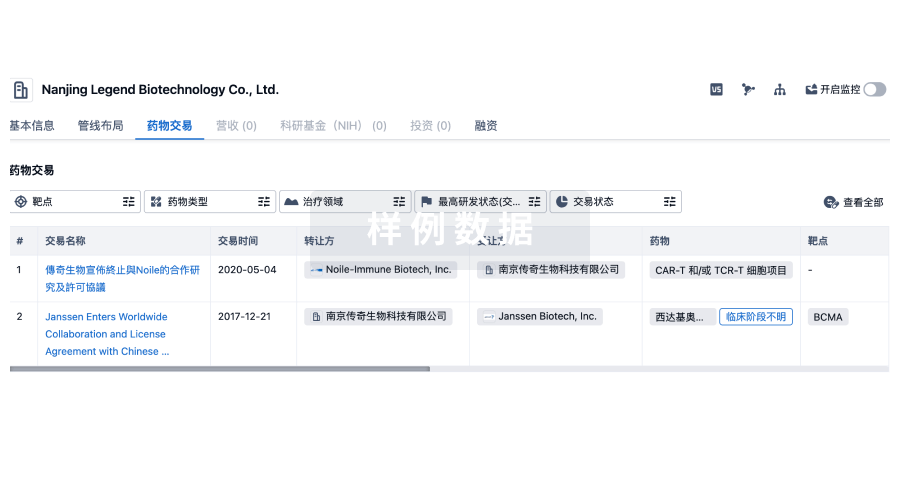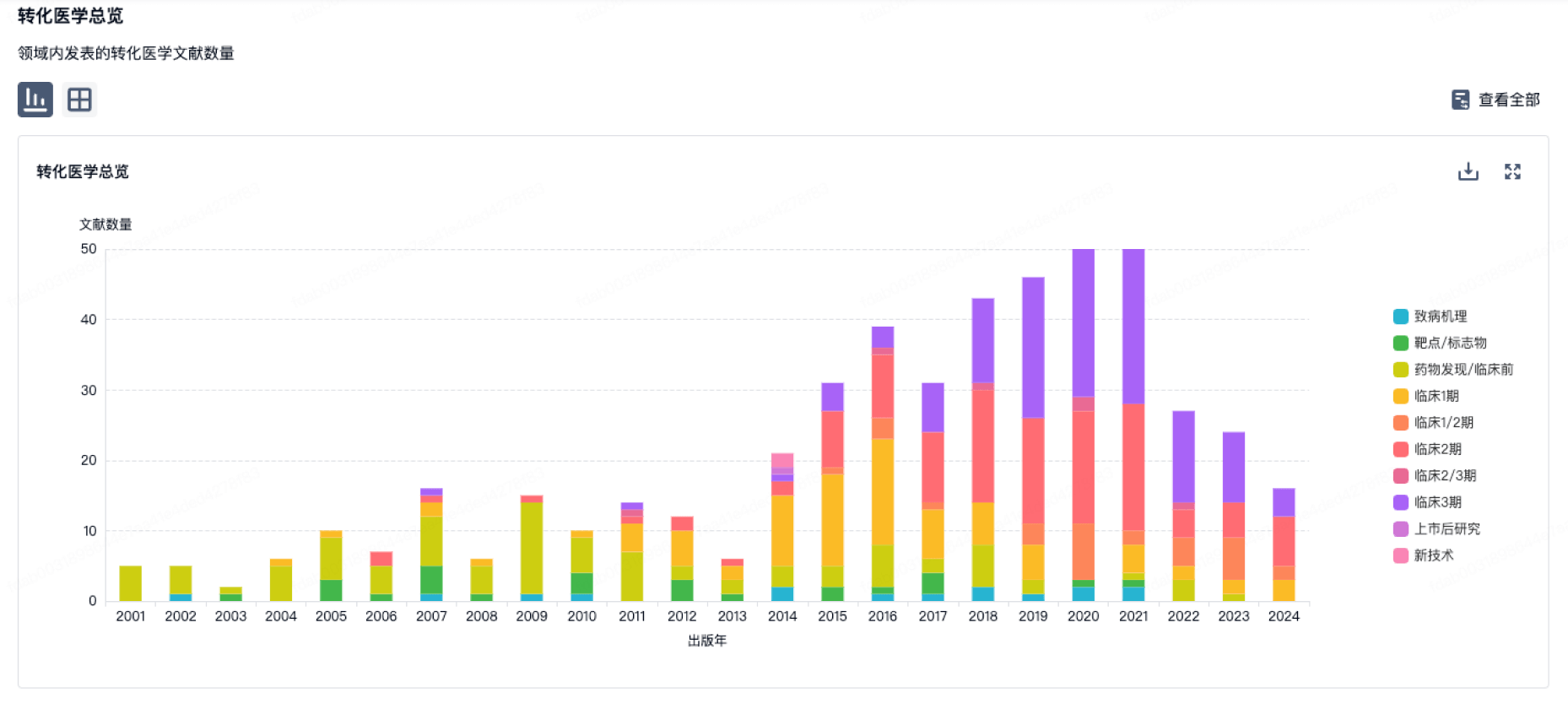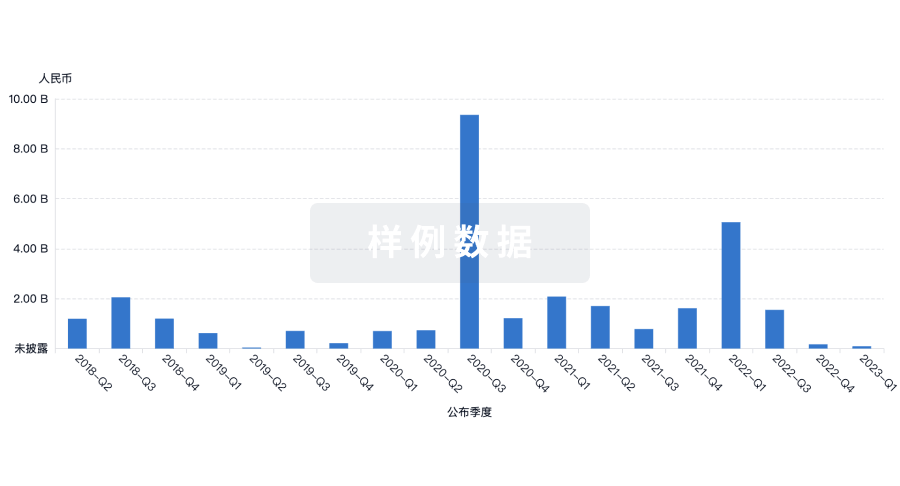预约演示
更新于:2025-10-30

Elektrofi, Inc.
更新于:2025-10-30
概览
关联
100 项与 Elektrofi, Inc. 相关的临床结果
登录后查看更多信息
0 项与 Elektrofi, Inc. 相关的专利(医药)
登录后查看更多信息
2
项与 Elektrofi, Inc. 相关的文献(医药)2025-11-01·JOURNAL OF PHARMACEUTICAL SCIENCES
Immunogenicity risk mitigation of therapeutic proteins with translational immunogenicity, analytical characterization, and regulatory insight
Review
作者: Shadbar, Sadiqua ; Auclair, Jared ; V Balu-Iyer, Sathy ; Dadon, Daniel
The immunogenicity of therapeutic proteins remains a key challenge, leading to early and late-stage clinical failures, posing a significant hurdle in the development of safe and efficacious biopharmaceuticals. This review highlights the main categories of factors influencing the immune response-mediated impacts of biotherapeutics: 1) patient-related factors, 2) product-related factors, and 3) administration-related factors. It provides a comprehensive overview of these immune response-mediated impacts, ranging from the development of anti-drug antibody (ADA) responses, injection site reactions (ISR), and injection site pain (ISP). Using immune response-mediated impacts as a focal point, the review discusses tools and strategies that can be used to evaluate the potential critical quality attributes (pCQAs) of therapeutic proteins as they have an impact on immunogenicity. These tools include various immunogenicity assessment assays spanning in silico, in vitro, ex vivo, in vivo animal models, and clinical tools. It also highlights a comprehensive repertoire of analytical characterization methods. Emphasis is placed on the importance of combined stage-appropriate use of these tools to minimize the risk of immunogenicity. Additionally, regulatory guidance, forums, and consortium landscapes are outlined to inform immunogenicity risk assessment strategy for therapeutic proteins. Ultimately, this integrated comprehensive immunogenicity testing strategy aims to advance the field of immunogenicity risk assessment to develop safe and efficacious protein therapeutics.
Drug Delivery and Translational Research
S.C. delivery of ultra-high concentration (up to 500 mg/mL) protein microparticle suspensions: pharmacokinetics, efficacy, biodistribution, and immunogenicity
Article
作者: Shadbar, Sadiqua ; Charles, Lyndon ; Sudrik, Chaitanya ; Gui, Zishu ; Vartak, Shankul ; Ivey, James ; Dehadrai, Aniket ; Liu, Lisa ; Kabir, Farah ; Dadon, Daniel ; Brown, Paul ; Weinstein, Eric ; Khwaja, Moin ; Tang, Yi ; Huck, Margaret ; Carter, Tyler
A shift towards the subcutaneous (S.C.) delivery of protein therapeutics is enabling patient-centric at-home self-administration. To circumvent the volume constraints of the S.C. route of delivery, protein therapeutics are required to achieve ever higher concentrations to administer doses beyond 1 g. Aqueous technologies rarely concentrate above 175 mg/mL and endure syringability and stability complications. Elektrofi's novel non-aqueous microparticle suspensions enable such ultra-high concentration delivery of protein therapeutics subcutaneously. In this work, we demonstrate the bioequivalence of high-concentration suspensions compared to their aqueous counterparts in a rodent model. The 500 mg/mL concentration iteration of the injection was injectable in 20 s with forces below 20 N. We also demonstrate comparable subcutaneous clearance of the suspension test articles to the aqueous comparator. To the best of our knowledge, this work is the first to report comparable efficacy and immunogenicity of microparticle suspensions to the aqueous comparator formulation. The model commercially available reagents serve as a glimpse into the performance of the Elektrofi technology which is in the process of advancing into the clinic with a multitude of biopharma partnerships.
22
项与 Elektrofi, Inc. 相关的新闻(医药)2025-10-19
Halozyme Therapeutics 和 Elektrofi 都专注于开发应用到单抗、治疗性蛋白和其他大分子生物药的皮下给药制剂,Halozyme的皮下给药制剂技术 ENHANZE 已成功在多个重磅单抗上实现商业化应用。10月1日,Halozyme 宣布将以约9亿美元收购 Elektrofi。Elektrofi拥有突破性的超高浓度微粒制剂技术 Hypercon,凭借 Hypercon 专利技术,Halozyme 将进一步扩展其药物输送技术,巩固其在药物输送领域中的领先地位,并通过许可业务模式推动公司实现长期、可持续的收入增长。
皮下给药公司 Halozyme 通过收购 Elektrofi 扩展其药物输送技术
by
TiPLab 木桃
Hypercon是一种创新的超浓缩微粒技术,能够在保持皮下注射便利性的同时实现高浓度生物制剂的皮下输送,解决了静脉注射的局限性。Hypercon可使生物制剂浓度达到 400-500 mg/ml,比目前标准水溶液制剂高出 4 至 5 倍,更适用于小剂量家庭给药。Elektrofi 的商业模式与Halozyme类似。
参见Halozyme官网
Halozyme称双方能够实现技术上的优势互补,Hypercon专利组合的有效期可以至2040年,包括14个专利家族,目前有9件US授权专利和19件US在审专利申请,能够支持长期收入增长。
参见Halozyme官网
Halozyme 成立于 1998 年,旨在开发用于治疗用途的重组人透明质酸酶,后期将重点放在利用透明质酸酶开发皮下注射制剂。通过广泛的研究,Halozyme 的科学家发现了如何使人透明质酸酶 PH20 可溶,同时在人体 pH 范围内保持透明质酸酶活性,由此衍生了ENHANZE技术和其改良版本的MDASE技术。
ENHANZE 技术已经经过商业化验证,可以增强皮下注射药物的扩散和吸收,通过将静脉注射转化为皮下给药并延长给药间隔改善患者体验并减轻治疗负担。
ENHANZE主要基于重组人透明质酸酶 rHuPH20,透明质酸是一种天然存在的碳水化合物,是皮下细胞外基质的主要成分,rHuPH20 通过分解透明质酸能够暂时降低对大量液体流动的阻碍,从而可以更快速、更有效地皮下输送高剂量、大容量的注射生物制剂。rHuPH20 对皮下空间结构的影响是暂时的,局部的透明质酸会在两天内恢复正常密度。
与通常需要根据体重进行静脉注射的给药方式相比,ENHANZE 可以实现固定剂量皮下注射,延长给药间隔,并可能降低输液相关反应。使用 ENHANZE 配制药物剂型还可以延长产品的生命周期。
Halozyme 已经将 ENHANZE 技术授权给领先的生物制药公司共同开发皮下注射药物,包括罗氏、武田、辉瑞、杨森、AbbVie、礼来、BMS、中外制药和 Acumen 等。目前与5家合作伙伴开发的十种药物的皮下制剂已经获批,包括罗氏的 Tecentriq 和 Herceptin 以及 BMS 的 Opdivo等重磅抗体。
根据 Halozyme 披露的信息,仅2025年第二季度,Halozyme 的特许权使用费收入为2.056 亿美元,较 2024 年第二季度的 1.249 亿美元增长 65%,预计2025年全年的特许权使用费收入将达到8.25亿美元至8.6亿美元。
Halozyme拥有多项涉及重组人透明质酸酶及其使用和制造方法相关的专利和专利申请,包括,PCT/US2009/006501家族和US7767429B2,最晚预计于2029 年到期,涵盖现有合作的 ENHANZE 技术。
在 ENHANZE 技术的基础上,Halozyme发现对PH20的氨基酸序列的特定位点进行氨基酸替换,能够获得具有不同活性和稳定性的新型PH20结构,由此衍生了ENHANZE 的改良版本—MDASE技术,相关专利家族PCT/US2012/072182预计于2032年左右到期(未考虑实际授权专利PTA等)。
对于 MDASE 技术,Halozyme则对于其他采用类似技术的药企发起了侵权诉讼。2025 年 4 月,Halozyme 在美国新泽西州地区法院对 MSD 提起专利侵权诉讼,指控其使用 Halozyme 专利保护的 MDASE 皮下给药技术开发皮下注射 Keytruda。Halozyme 公司正在寻求损害赔偿和禁令救济,以阻止MSD侵犯其 MDASE 相关专利,涉案专利均属于PCT/US2012/072182家族。
MSD于 2020 年开始与韩国公司 Alteogen 合作,将其透明质酸酶berahyaluronidase alfa(简称 ATL-B4)整合到可注射的 Keytruda 制剂中,目前正在接受 FDA 的审查,预计将于今年10月推出上市产品。
MSD此前已针对MDASE相关的10件专利(与被诉侵权专利列表不完全相同)向PTAB提起PGR专利无效。双方之前还尝试洽谈许可,看上去未能成功达成协议。
涉案专利,参见判决原文
* 以上文字仅为促进讨论与交流,不构成法律意见或咨询建议。
© 作为一家专业服务公司,TiPLab坚持原创的系统的研究,注重系统性知识积累与专业影响力。欢迎读者个人分享转发,各专业平台媒体如需转载请联系TiPLab获得授权。
TiPLab提供基于研究的核心知识产权服务
FTO:技术商业化实施的侵权风险防范
TiPLab通过对细分技术领域内核心技术和重要专利的长期研究,结合自身在数据检索和分析方面的专长,致力于帮助客户深入了解、积极应对潜在的专利侵权风险。
Due Diligence:商业活动中的知识产权尽职调查
在企业许可交易、融资、并购、上市等过程中,TiPLab帮助企业和投资方了解目标技术/产品的专利保护强度及产品商业化过程中潜在的专利侵权风险,从而为商业谈判和决策提供支持依据。
Patenting:全球范围内高价值专利资产的创设
TiPLab熟知全球主要国家和地区的法律实践和细分领域内的前沿技术进展情况,通过前瞻性的专利布局策略,帮助客户通过创设有价值的专利资产而获取、保持和巩固独特的竞争优势。
并购引进/卖出
2025-10-14
At Fierce Biotech Week 2025 in Boston, Halozyme Therapeutics CEO Helen Torley called on the pharma industry to break from the old habit of going to intravenous first and to start thinking about subcutaneous development early on.
Halozyme Therapeutics has been busy. While fighting a patent dispute with Merck & Co. and navigating the impact of the Inflation Reduction Act (IRA), the company has penned an acquisition of fellow drug delivery biotech Elektrofi.Halozyme scoured very broadly for potential acquisitions in the drug delivery field before landing on Elektrofi, Halozyme CEO Helen Torley said during an interview on the sidelines of Fierce Biotech Week in Boston.The San Diego biotech evaluated other areas such as the blood-brain barrier and oral delivery of biologics, looking for companies operating on similar business models, namely, a royalty-generating licensing platform built on a technology with sizable demand from pharma companies.Elektrofi fits that profile. The company’s Hypercon technology enables under-the-skin injections of drug substances at high concentrations, thereby reducing the volume of under-the-skin injections to levels that are suitable for at-home administration. Like Halozyme, Elektrofi grants its technology to biopharma companies for use in their subcutaneous products and earns licensing fees in return.Three attributes of Elektrofi stood out to Torley. Hypercon boasts a large total addressable market because a lot of antibodies are currently limited in their ability to be given in a simple, at-home subcutaneous injection. The technology has already attracted argenx, Eli Lilly and Johnson & Johnson with a near-term inflection point—entering in-human testing—within the next year or so. With intellectual property projection out to the mid-2040s, Hypercon offers another source of long, durable revenues, the Halozyme chief executive explained.Despite Hypercon and Halozyme’s own Enhanze—already used in 10 commercial drugs—both being subcutaneous delivery technologies, Torley sees no antitrust risk in the acquisition.The two technologies “fit different segments of the market,” and potential clients will “either want to get to the very small volume with the Elektrofi technology, or they’ll be very happy with Enhanze” at a relatively larger volume, Torley said. The patient population and the target site of care will be key determinants of a client’s choice between the two technologies, Torley explained. For some cancer drugs, such as J&J’s multiple myeloma therapy Darzalex Faspro, treating patients in the doctor’s office for a short time will be ideal so healthcare practitioners can talk with them during treatment, she said.There's a much stronger shift toward at-home treatment and self-administration by patients in inflammation and immunology, "and that's where the Hypercon technology comes in," the executive explained, adding that similar needs exist in nephrology, neurology and some oncology products. Halozyme shifted to an external innovation model in 2019 after discontinuing its internal drug development efforts following the failure of its then-lead PEGylated recombinant human hyaluronidase program in pancreatic cancer.The Elektrofi deal comes after a failed bid for Evotec last year. The German company insisted on a standalone strategy and didn’t engage with Halozyme on the biotech’s $2.1 billion buyout offer.The deal also comes after a relatively quiet period for Halozyme’s own Enhanze technology. The last major partnership Halozyme penned for Enhanze can be traced to a March 2022 agreement with Roche’s Chugai Pharmaceutical on an undisclosed drug candidate, and, before that, an “ultra-long-acting” HIV drug pact with GSK’s ViiV Healthcare in 2021.Torley said the lull was caused by the IRA, signed into law in August 2022. She said Halozyme saw a slowdown in deal talks for its Enhanze platform as biopharma companies reevaluated their portfolios and strategies.The silence of Enhanze was even more jarring compared to recent licensing deals Korean company Alteogen signed with AstraZeneca and Daiichi Sankyo for its human recombinant hyaluronidase enzyme ALT-B4.In both cases, the pharma companies had approached Halozyme, but a deal couldn’t be made because they involved targets that Halozyme had exclusively partnered with somebody else, Torley said.Halozyme is deep in a patent dispute with Merck around the New Jersey pharma’s newly FDA-approved subcutaneous version of Keytruda, which was the first Big Pharma client of the Alteogen tech. The U.S. Patent and Trademark Office (USPTO) has allowed a post-grant review for Merck’s challenge to some of Halozyme’s patents around modified human hyaluronidase, and Halozyme is seeking royalty payments on Merck’s sales of subcutaneous Keytruda.Halozyme is confident in its case because it has determined, based on public information of molecular structure, that ALT-B4 is one of the products the company invented and patented, Torley said.Halozyme expects the USPTO will schedule a hearing this month, but years of potential legal tug-of-war are ahead if the two firms fight to the end. Torley reiterated that Halozyme is open to a licensing deal with Merck. While discussions of new partnerships are resuming at Halozyme, some uncertainties with the IRA remain that could impact Halozyme.The Centers for Medicare & Medicaid Services (CMS) recently proposed a policy change for fixed combination drugs when determining drugs for price adjustments. Specifically, in a draft guidance, the CMS solicited comments on whether certain drug products with ingredients that it described as “not biologically active against the disease state(s)” should be aggregated with products made with at least one but not all of the active ingredients. In previous rounds of IRA negotiations, the CMS had regarded fixed combination drugs as distinct qualifying single source drugs from their individual active ingredients. The proposed rule would directly impact subcutaneous drugs co-formulated with Halozyme’s recombinant human hyaluronidase. A drug would be more susceptible to IRA price negotiations if its intravenous version and its Enhanze-based subcutaneous formulation are considered the same product. After industry pushback, the CMS abandoned the policy in final guidance released Sept. 30 for prices taking effect in 2028. The agency said it will revisit the idea next year for prices taking effect in 2029.“Due to the complexity and scope of this issue as noted above in stakeholder comments, CMS believes additional time would be necessary to develop objective policy criteria if CMS were to finalize such a policy, and thus will not make a change to the fixed combination drug policy in this final guidance,” the agency said in the final guidance (PDF). “CMS intends to address this program integrity risk and is continuing to consider the appropriate policy to implement in rulemaking beginning in initial price applicability year 2029.”“We applaud CMS for recognizing that it was a very complex topic,” Torley said.Although Enhanze may not be a therapeutically active pharmaceutical ingredient in a traditional sense, Halozyme has argued that the technology offers clinically meaningful benefits for patients and that the CMS lacks the authority to make that determination. For example, a subcutaneous version of J&J’s Rybrevant using Enhanze showed statistically superior overall survival compared with its original intravenous version in a phase 3 trial in first-line EGFR-mutated non-small cell lung cancer.Overall, Torley said the IRA’s impact on Halozyme is overblown. Darzalex Faspro, the biggest Enhanze-based product by sales, is shielded from price negotiations as all of the drug’s indications have orphan designations.In another positive development for the company, the recently enacted One Big Beautiful Bill Act includes a term that delays the price negotiation countdown for rare disease therapies until after the drug expands beyond orphan indications. Torley raised the example of Bristol Myers Squibb’s subcutaneous Opdivo, the initial FDA approval for which in 2014 was for late-line melanoma, an orphan indication. By the time Opdivo is up for evaluation, biosimilar products are expected to have arrived, making the PD-1 inhibitor ineligible for IRA price reduction.All told, Medicare Part B constitutes about 20% of Enhanze-partnered product sales, according to Torley.Now that drug developers have a better grasp of the IRA’s impact, Halozyme has seen a ramp-up of deal discussions over the last 12 months, and Torley said she’s “very pleased" with the ongoing conversations. “We are going to sign and announce a deal this year, and we’re very excited about that,” the Halozyme CEO said.While most of Halozyme’s existing partnerships are focused on turning intravenous infusions into subcutaneous injections, Torley said extending the drug release time or reducing the dosing frequency—like the HIV collaboration with GSK—has become a very hot topic in the company’s deal discussions, especially in inflammatory diseases as customers look to improve their drugs’ competitive profiles.At Fierce Biotech Week in Boston, the Halozyme CEO called on the industry to break from the old habit of going to intravenous first and to start thinking about subcutaneous development early on, potentially in a separate arm in a phase 1 trial. “The early development is a very important time to get to that staging of de-risking to be able to get support, to continue to invest in the drug, and everybody is used to seeing the PK of IV drugs,” Torley said during a fireside chat. “So there needs to just be that comfort level with understanding how the subQ profile can also be translated into the endpoints and the data you need to pick the dose in phase 2 and 3.”As for potential additional acquisitions, Torley said the company is currently focused on completing the integration with Elektrofi. “But, if we can continue to find businesses that have got high growth potential, durable revenue, this high-margin, a profitability model that the licensing model is, absolutely we’re going to keep growing by using the cash to add additional revenue streams, because we’re not investing in the internal innovation.”

临床结果并购引进/卖出临床3期
2025-10-02
iStock/
NISIT RAWO
Both Halozyme and Elektrofi have partnered with several Big Pharma companies to provide drug delivery technologies.
Halozyme Therapeutics will acquire Elektrofi for up to $900 million in a deal that will combine two subcutaneous drug delivery specialists that have each lent their technologies to Big Pharma companies.
The deal,
announced Wednesday
, will involve a $750 million upfront payment from Halozyme, plus up to three $50-million milestone payments, each contingent on different product approvals. Halozyme and Elektrofi’s respective boards of directors have unanimously signed off on the deal, and the companies expect the transaction to wrap up in the fourth quarter, pending customary closing conditions.
According to Halozyme’s news release, the acquisition makes strong strategic sense, bringing together “complementary” subcutaneous technologies that boost the convenience and accessibility of innovative therapies. The Elektrofi buyout also promises to be a financial boon to Halozyme, with milestone payments potentially hitting $275 million, alongside royalty revenues from the microparticle platform that are set to begin in 2030.
Halozyme and Elektrofi are known for their drug delivery technologies, which many of pharma’s biggest players have bought into. Halozyme, for instance, owns the Enhanze platform, which allows certain drugs to be administered via an under-the-skin injection. According to the company’s
website
, there are currently 10 commercial products that use Enhanze, among which are Johnson & Johnson’s multiple myeloma therapy Darzalex and lung cancer drug Rybrevant.
Takeda is also leveraging the Enhanze technology for its primary immunodeficiency drug Hyqvia, while Roche uses the platform for many of its products, including the PD-1 blocker Tecentriq and the multiple sclerosis medicine Ocrevus. Bristol Myers Squibb also partnered with Halozyme for the subcutaneous formulation of its cancer therapy Opdivo.
Elektrofi also has a high-pro of Big Pharma partners. The company’s Hypercon technology uses microparticles to similarly allow a convenient, low-volume subcutaneous delivery of biologics as opposed to infusions.
In October 2023, Eli Lilly
paid $20 million upfront
to use Elektrofi’s technology for three targets, with Elektrofi in line for more than $150 million in future payments per target. J&J also uses Elektrofi’s microparticle approach,
putting down $18 million in January 2024
in a deal that spans five targets. Milestones under the J&J deal reach above $155 million per target.
Argenx is also an Elektrofi partner under an
April 2021 agreement
geared toward exploring subcutaneous formulations for the former’s FcRn-targeting products.
并购
100 项与 Elektrofi, Inc. 相关的药物交易
登录后查看更多信息
100 项与 Elektrofi, Inc. 相关的转化医学
登录后查看更多信息
组织架构
使用我们的机构树数据加速您的研究。
登录
或

管线布局
2025年11月03日管线快照
管线布局中药物为当前组织机构及其子机构作为药物机构进行统计,早期临床1期并入临床1期,临床1/2期并入临床2期,临床2/3期并入临床3期
其他
1
登录后查看更多信息
药物交易
使用我们的药物交易数据加速您的研究。
登录
或

转化医学
使用我们的转化医学数据加速您的研究。
登录
或

营收
使用 Synapse 探索超过 36 万个组织的财务状况。
登录
或

科研基金(NIH)
访问超过 200 万项资助和基金信息,以提升您的研究之旅。
登录
或

投资
深入了解从初创企业到成熟企业的最新公司投资动态。
登录
或

融资
发掘融资趋势以验证和推进您的投资机会。
登录
或

生物医药百科问答
全新生物医药AI Agent 覆盖科研全链路,让突破性发现快人一步
立即开始免费试用!
智慧芽新药情报库是智慧芽专为生命科学人士构建的基于AI的创新药情报平台,助您全方位提升您的研发与决策效率。
立即开始数据试用!
智慧芽新药库数据也通过智慧芽数据服务平台,以API或者数据包形式对外开放,助您更加充分利用智慧芽新药情报信息。
生物序列数据库
生物药研发创新
免费使用
化学结构数据库
小分子化药研发创新
免费使用